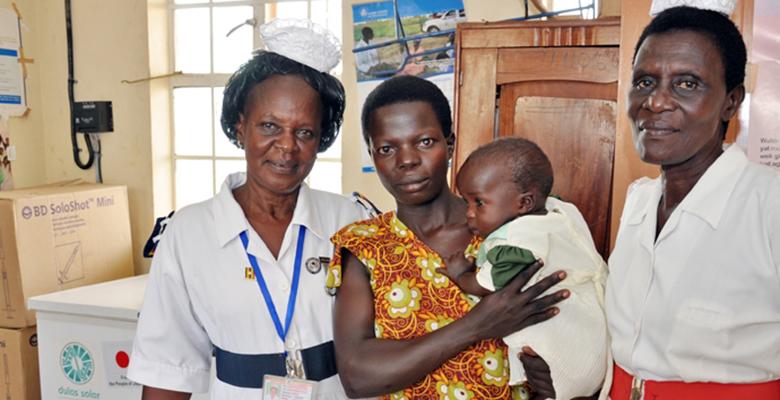
Dr. John Baptist Waniaye was working as a medical officer when he realized he wanted to take on a new role. “I opted to go into management for health [because] I realized that there are gaps which when you’re a leader and a manager you can easily fix and make the environment very good for the health workers. And that is my drive—I want to see that health workers have what they need in order to offer their services and that our patients are happy.”
Recently Dr. Waniaye, now the district health officer in Mbale, joined teams from 19 Ugandan districts in the Human Resources for Health (HRH) Leadership and Management Program. The Uganda Capacity Program conducted this six-month course with CapacityPlus’s help in preparing instructors to carry out the course.
“We’re now results-oriented”
All participants came together for three one-week workshops and supplemented this work with field assignments. District teams took on their field assignments as a unit, focusing on their most critical HRH issue. Facilitators provided counseling and coaching visits to the districts as a way of lending further support.
“Because of the Leadership and Management Program we’re now results-oriented,” says Dr. Waniaye. “Most of our health workers work with targets which are known, and everybody’s working towards that. Health workers are working together and that has helped services.”
“They are voting by their legs”
The Mbale District team’s participation equipped them “to do good monitoring and good supportive supervision and mentoring,” notes Dr. Waniaye. “And actually the health units have shown that within the little resources it is possible to offer a better service. This is really evidenced by the increased OPD [out-patient department] attendance.” He underlines this point: “A patient may not come directly to complain, but if you have increased the numbers of patients they are voting by their legs!”
A health worker in the district agrees: “Client care has improved in this facility so much,” says Agnes Masagwayi, clinical health officer at Busiu Health Center IV in Mbale District. She joined Dr. Waniaye’s team in the HRH Leadership and Management Program. Empowered and equipped with new skills, Masagwayi was quick to take action.
“It is ourselves who need to plan”
As just one example, Masagwayi explains that her facility lacked running water. The course convinced her that she and her colleagues were capable of bringing about a change: “Really it is ourselves who need to plan, prioritize, align, know what problems we have and what are the available opportunities for addressing this problem.” She proudly indicates large tanks outside and demonstrates washing her hands at a sink—now running water is always available.
In Dokolo District, Ojulun Joreme faced challenges of his own. As principal personnel officer, his job involved health workers yet he had only minimal interaction with them. “I had little attachment to the health staff besides processing personnel appointment letters and confirmation letters,” he admits. But that changed as a result of his participation in the Leadership and Management Program.
“We give a chicken”
“I have had a lot of tremendous changes in my approach to work,” he says. Now, “my attitude as an HR manager and attitude towards the health sector is more positive. One of the programs which we immediately put in place was joint supervision of the health units and health staff”—this brought him into regular contact with health workers on the job and helped him feel more connected. And outstanding health workers are gifted with small prizes, which Joreme delivers. “Just for example,” he says, “we get the best performing [staff], we give a chicken, and they’re happy! So their motivational level has also risen. The other impact is retention; we have been able to retain the staff because of these activities.”
“I have been able to get transformed”
Joreme also realized the value of working together to advocate for increased support. “After we came back from the training, we lobbied—with support from Uganda Capacity Program—and called all of the stakeholders of Dokolo District at the district level, the politicians, the administrators, and we had one day of full-blast discussions on the health sector alone. I have been able to get transformed as an HR manager,” he notes, and with this meeting “we were also transforming their attitudes towards the health sector.“
National HRH leaders from Uganda’s Ministry of Health and other ministries were involved in the design and delivery of the HRH Leadership and Management Program, which is linked to the national HRH strategic plan.
The Uganda Capacity Program is funded by USAID and led by IntraHealth International. IntraHealth is the lead partner in the CapacityPlus global project, also funded by USAID.
To learn more, watch the video, “That’s Improvement!”: Uganda Focuses on Health Workers, and read the report, HRH Professional Development at the District Level: Recommendations Based on the Ugandan Experience.
—Sarah Dwyer, Communications Manager, IntraHealth International

